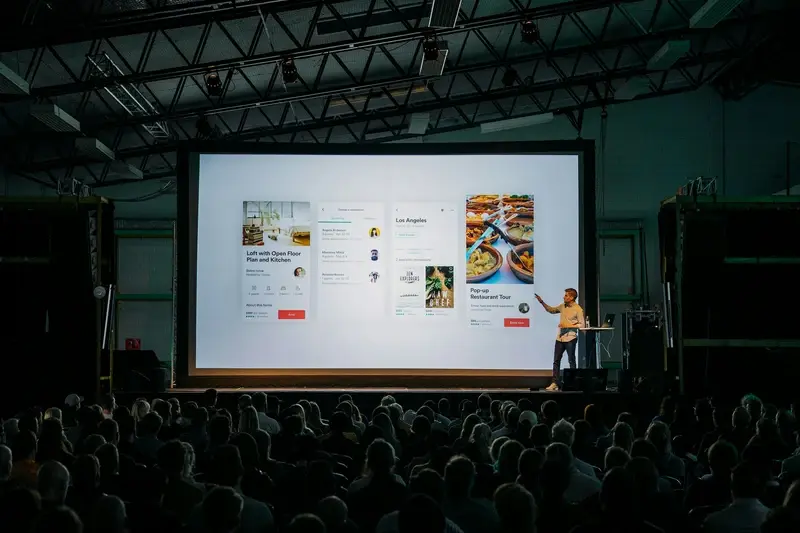What App Metrics Do Investors Really Care About?
Nine out of ten mobile app startups fail to secure their second round of funding. That's a staggering statistic that highlights just how difficult it can be to convince investors that your app has real potential. The difference between those that succeed and those that don't often comes down to one thing—understanding exactly what metrics investors want to see.
Having worked with countless startups over the years, I've watched brilliant app ideas crash and burn during investor meetings simply because founders couldn't present the right data in the right way. They'd focus on vanity metrics like total downloads whilst completely ignoring the business analytics that actually matter. Meanwhile, apps with smaller user bases but solid retention rates and clear monetisation paths would walk away with funding.
The apps that get funded aren't necessarily the ones with the most users—they're the ones that can prove sustainable growth and profitability
This guide will walk you through the specific metrics that investors scrutinise when evaluating mobile app opportunities. We'll cover everything from user acquisition costs to lifetime value, engagement patterns to technical scalability. By understanding these funding requirements from an investor's perspective, you'll be better positioned to build, measure, and present your app in ways that actually resonate with potential backers.
Understanding the Investor Mindset
After working with countless startups over the years, I've noticed something interesting about how investors think. They don't just look at your app and wonder if it's pretty or functional—they're asking themselves one big question: "Can this make money?" And more importantly, "Can this make a lot of money?"
Investors see hundreds of pitches every month. They've got limited time and even more limited patience for apps that can't prove their worth with solid numbers. What they really want to see is evidence that your app solves a real problem for real people who are willing to pay for that solution.
What Gets Investors Excited
The metrics that make investors sit up and take notice aren't always what you'd expect. Sure, download numbers matter, but what they're really looking for is signs of sustainable growth and user behaviour that suggests people can't live without your app.
- Users who come back day after day
- Clear revenue streams that actually work
- Growth that doesn't rely on burning through cash
- Market size that justifies the investment
Think about it from their perspective—they're not just buying into your app, they're buying into the belief that you've built something people genuinely need and will pay for. The numbers you show them need to tell that story convincingly.
User Acquisition and Retention Metrics
When I'm working with startups preparing their pitch decks, they often get confused about which numbers actually matter to investors. Here's the thing—investors want to see that your mobile app can both attract users and keep them coming back. It's not just about downloads anymore; that's old thinking from the early app store days.
The metric that makes investors sit up and pay attention is your Customer Acquisition Cost (CAC). This tells them how much you're spending to get each new user. But here's where it gets interesting—they'll want to see this number trending downward over time. If your CAC is going up, that's a red flag that suggests your business analytics aren't working in your favour.
The Retention Story
Retention rates are where the real magic happens. Day 1, Day 7, and Day 30 retention numbers paint a picture of whether people actually find your app useful. I've seen apps with millions of downloads fail to secure funding because their Day 7 retention was below 20%. Investors know that poor retention means you'll be spending more and more money just to replace users who leave.
Track your cohort retention weekly—investors love seeing consistent improvement in these numbers as it shows you're learning from user behaviour and making meaningful changes.
The Funding Requirements Connection
These metrics directly impact your funding requirements. If your acquisition costs are high and retention is low, you'll need more money to achieve the same growth. Smart investors can spot this pattern immediately, which is why understanding user retention in mobile apps before you pitch is absolutely critical for your success.
Revenue and Monetisation Indicators
Now we're getting to the bit that makes investors' eyes light up—money! I'll be honest with you, revenue metrics are often the first thing investors look at when evaluating an app. They want to see that your app can actually generate income, not just downloads or user engagement.
The big three metrics that matter most are Monthly Recurring Revenue (MRR), Average Revenue Per User (ARPU), and Customer Lifetime Value (CLV). MRR shows how much money your app brings in each month from subscriptions or regular purchases. ARPU tells you how much each user is worth on average, whilst CLV predicts the total amount a user will spend over their entire relationship with your app.
Subscription vs One-Time Purchase Models
Investors love subscription models because they create predictable, recurring income streams. A £2.99 monthly subscription might seem small, but multiply that by thousands of users over several months and you've got serious revenue. One-time purchases can work too, but they're harder to predict and scale.
Conversion Rates That Count
Your conversion rate from free to paid users is another metric investors scrutinise closely. If only 0.5% of your users convert to paid subscriptions, that's a red flag. Industry benchmarks vary, but anything above 2-5% conversion typically catches investor attention. Remember, it's not just about getting users—it's about getting paying users who stick around.
Engagement and Usage Patterns
When I'm working with app founders preparing for funding rounds, they often get caught up in download numbers—but here's the thing investors actually care about: what happens after someone downloads your mobile app. Daily active users, session length, and screen flow patterns tell the real story of whether people find your app genuinely useful or if it's just digital clutter on their phone.
The metrics that make investors sit up and take notice are surprisingly straightforward. How often do people open your app each day? How long do they stay when they do? Which features get used most, and which ones get ignored completely? These engagement patterns reveal whether your app solves a real problem or just seemed like a good idea at the time.
What Strong Engagement Actually Looks Like
I've seen apps with modest download numbers secure serious funding because their business analytics showed incredible stickiness—users returning multiple times per day, spending meaningful time in the app, and engaging with core features consistently. Compare that to apps with millions of downloads but terrible retention rates; investors see right through those vanity metrics.
The best funding requirements presentations I've reviewed focus heavily on user behaviour patterns rather than just growth charts
Session frequency and feature adoption rates give investors confidence that you understand your users and have built something they genuinely want to use regularly. Implementing proven strategies to keep users coming back can significantly improve these key metrics.
Market Position and Growth Trajectory
When I'm talking to investors about app metrics, one question that always comes up is "where does this app sit in the market?" It's a fair question—they want to know if you're fighting for scraps or if there's genuine room to grow. Market position isn't just about being number one; it's about understanding your competitive landscape and showing you can carve out your own space.
Competitive Benchmarking
Smart investors will compare your app's performance against similar apps in your category. They'll look at your download rankings, user ratings, and how you stack up against direct competitors. If you're a fitness app, they want to see how you perform against other fitness apps—not just apps in general. This benchmarking helps them understand if your metrics are actually impressive or just average for your space.
Growth Trajectory Analysis
Here's where things get interesting. Investors don't just want to see good numbers; they want to see improving numbers. A steady upward trend in downloads, user engagement, and revenue tells a story of momentum. Even if your absolute numbers aren't massive yet, consistent month-over-month growth can be more compelling than a one-time spike. They're looking for evidence that you're not just a flash in the pan—you're building something sustainable that can capture more market share over time.
Technical Performance and Scalability
When I'm talking to investors about mobile app development, they always want to know one thing—can your app handle growth? It's not enough to have a brilliant idea anymore; your app needs to perform well under pressure and scale without breaking the bank. Investors see technical performance as a crystal ball into your app's future success.
The metrics that really matter here are crash rates, load times, and server response speeds. A crash rate above 2% will send investors running for the hills, whilst load times over 3 seconds mean users will abandon your app faster than you can say "funding requirements". These aren't just numbers on a dashboard—they're direct indicators of user experience and retention.
Infrastructure Scalability Metrics
Smart investors dig deeper into your backend architecture. They want to see how your costs scale with user growth and whether your mobile app can handle traffic spikes without falling over. Business analytics around server costs, database performance, and API response times tell them whether you've built something sustainable or just a house of cards.
- Average server response time (should be under 200ms)
- Database query performance and optimisation
- CDN usage and asset delivery speeds
- Auto-scaling capabilities and cost implications
- Third-party service dependencies and their reliability
Monitor your app's performance metrics religiously from day one. Investors can spot apps that weren't built for scale, and fixing performance issues later is exponentially more expensive than getting it right from the start.
Business Model Validation
When I'm reviewing apps with potential investors, one question always comes up: does this business model actually work? It's not enough to have users downloading your app—you need to prove that people will pay for what you're offering. Investors want to see that your app can generate sustainable revenue, not just survive on venture capital.
Proving Your Revenue Streams
The metrics that matter here depend on your business model. If you're running a subscription app, investors will look at your monthly recurring revenue (MRR) and how it's growing month-on-month. They'll want to see that people aren't just signing up for free trials—they're converting to paid subscriptions and sticking around.
For apps that rely on in-app purchases, the key number is your average revenue per user (ARPU). This tells investors how much money each user brings in over time. A gaming app might have an ARPU of £2 per month, whilst a productivity app could be £15.
Unit Economics That Make Sense
Here's where many apps fall down: their unit economics don't work. You need to show that acquiring a customer costs less than what they'll pay you over their lifetime. If it costs £10 to acquire a user through advertising, but they only spend £5 in your app, you've got a problem that no amount of scaling will fix.
Conclusion
After working with countless startups seeking funding over the years, I can tell you that understanding what investors want isn't rocket science—but it does require focus. The mobile app space is competitive, and investors see hundreds of pitches. They've become quite good at spotting which apps have real potential and which ones are just nice ideas without substance.
The metrics we've covered throughout this guide aren't just numbers on a dashboard; they're the language investors speak fluently. When you can show strong user retention alongside growing revenue per user, you're telling a story that makes sense to them. When your business analytics reveal clear patterns of growth and engagement, you're demonstrating that you understand your market.
Here's what I've learned from watching successful funding rounds: investors don't just want to see good numbers—they want to see that you understand what those numbers mean. They're looking for founders who can explain why their daily active users are growing, how they plan to improve their customer acquisition cost, and what they'll do when they hit inevitable bumps in the road.
The funding requirements game has changed significantly since the early days of mobile apps. Today's investors are more sophisticated, more cautious, and frankly, more demanding. But that's good news if you're prepared with the right metrics and the insight to interpret them correctly.
Share this
Subscribe To Our Learning Centre
You May Also Like
These Related Guides

What Should I Include in My App Investment Pitch Deck?

How Do I Pitch My Mobile App to Investors and Secure Funding?



